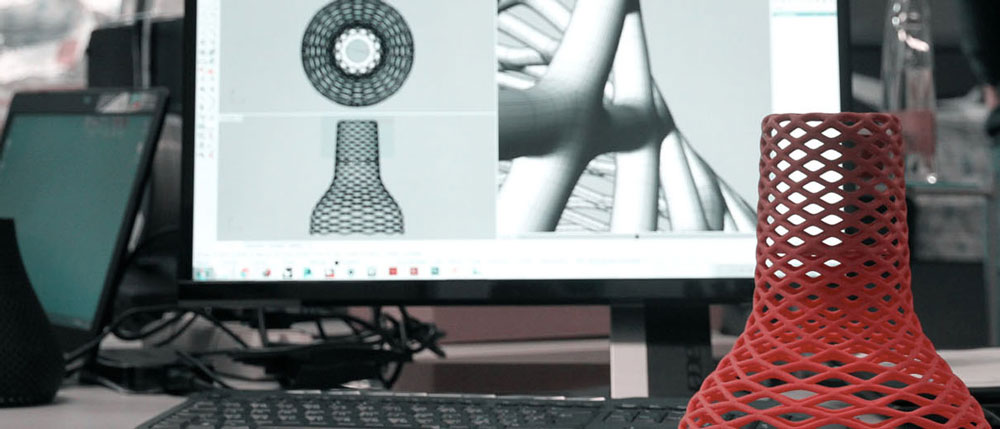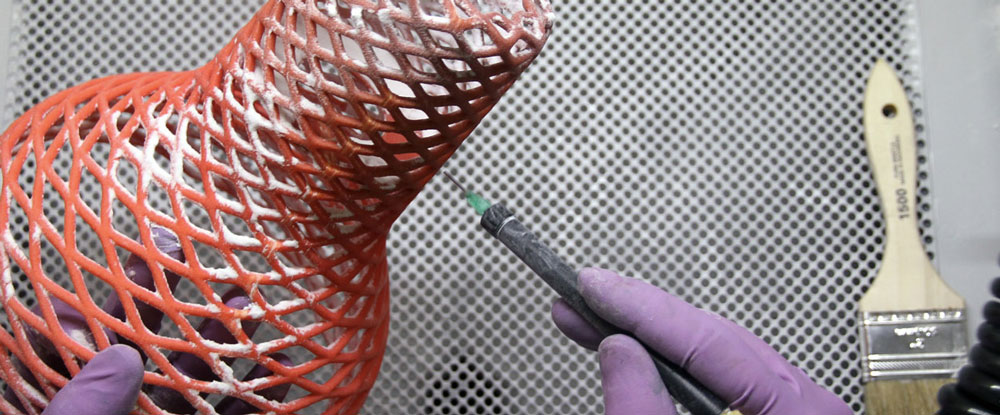Whether it will go on to grow into the mass market (and it’s hard to predict when that will actually happen), the consumer 3D printing industry was born in the two years between mid 2012 and mid 2014, when MakerBot made a breakthrough in getting its desktop 3D printers out to a new and wider than ever demographic and 3D Systems further evolved its Projet x60 full color line of (Zcorp) 3D printers to introduce full colour plastic with the Projet 4500.
These two trends – selling desktop systems and offering professional full colour 3D prints – materialized into all the new 3D printing services popping up all over the world (that could afford the investment). And that is exactly what Fare 3D, a Milan based start-up, did, while adding in a touch of Italian creativity by also introducing and selling innovative 3D printed lamp designs, created by a team of designers (Dario Sartori, Matte Meraldi and Simone Colombo).
Led by executive temporary manager Alberto Sgheiz, who came in after a lengthy professional experience in the consumer electronics industry, the shop leveraged the knowledge and means of its primary investor, Roberto Cremonesi, who built a business based on 2D printing. He saw the potential of 3D printing in both the sale of personal systems and the ability to offer professional services and products for consumers.
The personal systems of choice ended up being the MakerBot Replicator line of desktop 3D printers, including the new Fifth Gen, Replicator Mini and Z18, along with the Replicator 2X which the designers also use to create some of their products. The professional system they invested in is, of course, the €70,000 Projet 4500.
Business has been growing although the consumer boom still has to take place. In fact – at this point – Fare 3D earns more from reselling the MakerBot systems than from offering consumer 3D prints. Most of the products that are produced are in fact prototypes, both for the architectural and for the engineering and industrial design fields.
However, the possibilities remain endless. The company received a lot of visibility for its 3D printed lamps during the 2014 Milan Design Week and is now focusing on getting more and more visibility. “Communication is the key issue”, says Alberto Sgheiz, whom I met with after being contacted by Elisabetta Andreini, the person responsible for Fare 3D’s blog & social media, “people still need to fully understand what 3D printing can do for them and how. This business is going to grow and we need to be able to seize the opportunities as they present themselves”.
That is why Fare 3D is constantly working on cultural and marketing activities to get the word out. Although the service does not have windows on the city streets, they have established partnerships with local bookstores and shopping centers, with corners and demos introducing 3D printing and what it can do, anything from 3D designs on demand, 3D modeling of prototypes, rapid prototyping and 3D printed figures or physical photography.
There are many more projects in the works, ranging from creating new online software tools, to selling 3D printable designs to making a push into the consumer electronics distribution channels. Fare3D is living the 3D printing dream, just how long before it becomes fully real is still a question that has no definite answer but, then again, if it was an everyday job, it would not be as much fun.




